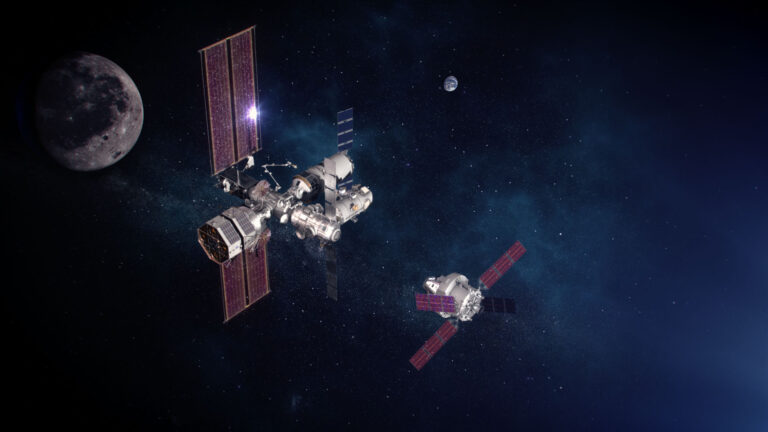Imagine this: It’s the year 2026. You’re watching a live stream on your phone, coffee in hand, as a rocket ignites on the launchpad. The ground trembles, and within seconds, a crew of astronauts is hurtling toward the Moon. This isn’t a sci-fi movie or a repeat of the 1969 Apollo mission. This is Artemis—a bold new chapter in humanity’s journey beyond Earth.
{tocify} $title={Table of Contents}NASA’s Artemis program is the most ambitious lunar exploration effort since the Apollo era. It’s not just about revisiting the Moon; it’s about building a sustainable presence, testing technology for Mars missions, and inspiring a new generation of space enthusiasts. Let’s break it down and see why Artemis is such a big deal.
Why Is NASA Going Back to the Moon?
If we’ve already been to the Moon, why go back? That’s the million-dollar question (or rather, the multi-billion-dollar question). Here’s why Artemis matters:
- Lunar Economy & Resources – The Moon isn’t just a giant rock in the sky. Scientists believe it holds valuable resources like water ice, which could be converted into rocket fuel. Establishing a lunar economy could open doors for commercial space ventures.
- A Stepping Stone to Mars – Think of the Moon as a cosmic training ground. If we want to send humans to Mars, we need to practice living in deep space first. Artemis will help us test crucial technologies, from habitat systems to space agriculture.
- International Collaboration – NASA isn’t going solo. Artemis is a global effort, involving partners like the European Space Agency (ESA), Japan, Canada, and even private companies like SpaceX and Blue Origin.
- Inspiring the Next Generation – The Apollo program sparked a wave of interest in STEM fields. Artemis has the potential to do the same for today’s kids, who might be tomorrow’s astronauts or engineers.
Meet Artemis: A Multi-Mission Program
Artemis isn’t a one-and-done deal like Apollo. It’s a series of missions, each building on the last. Here’s what’s on the roadmap:
- Artemis I (2022) – An uncrewed test flight to validate the Space Launch System (SLS) and Orion spacecraft.
- Artemis II (2024) – The first crewed flight, taking astronauts around the Moon but not landing.
- Artemis III (2025-2026) – The big one: sending astronauts to the lunar surface, including the first woman and the first person of color.
- Artemis IV and Beyond – Future missions will focus on establishing a lunar base and testing technologies for Mars exploration.
 |
The Tech Powering Artemis
Behind every successful space mission is some seriously impressive technology. Artemis is no exception. Here’s a look at the hardware making it all possible:
- Space Launch System (SLS) – The most powerful rocket NASA has ever built. It’s designed to carry astronauts and cargo to the Moon and beyond.
- Orion Spacecraft – Think of it as Apollo’s cooler, more advanced cousin. Orion is the crew capsule that will transport astronauts safely to and from deep space.
- Gateway Lunar Space Station – A small space station orbiting the Moon, serving as a hub for future missions and a launch point for Mars.
- Lunar Landers – Companies like SpaceX are developing next-gen lunar landers, like Starship HLS, to ferry astronauts to the Moon’s surface.
- Spacesuits & Rovers – Astronauts will sport high-tech suits designed for better mobility, and NASA is working on rovers that could one day drive autonomously on the Moon.
Challenges & Controversies
Not everything about Artemis is smooth sailing. There are plenty of hurdles to overcome:
- Budget Concerns – Space missions aren’t cheap. Artemis is expected to cost over $90 billion by the time astronauts touch down.
- Technical Delays – Spaceflight is complicated. Development setbacks have already pushed timelines back multiple times.
- Commercial vs. Government Roles – With private companies like SpaceX taking a bigger role, there’s an ongoing debate about the balance between government-led and commercial-led space exploration.
- Radiation Risks – Long-term exposure to space radiation is a serious health concern for astronauts on extended lunar missions.
The Future of Lunar Exploration
Artemis is just the beginning. If all goes according to plan, we’ll have a permanent presence on the Moon within the next decade. Imagine astronauts growing food in lunar greenhouses, using 3D-printed habitats, and even mining resources for fuel and construction.
This isn’t just NASA’s dream—it’s a vision shared by space agencies and private companies worldwide. The Moon is our stepping stone to Mars, and Artemis is the first giant leap.
So, the next time you gaze up at the Moon, remember: We’re not just looking at it—we’re going back. And this time, we’re staying.
{fullWidth}